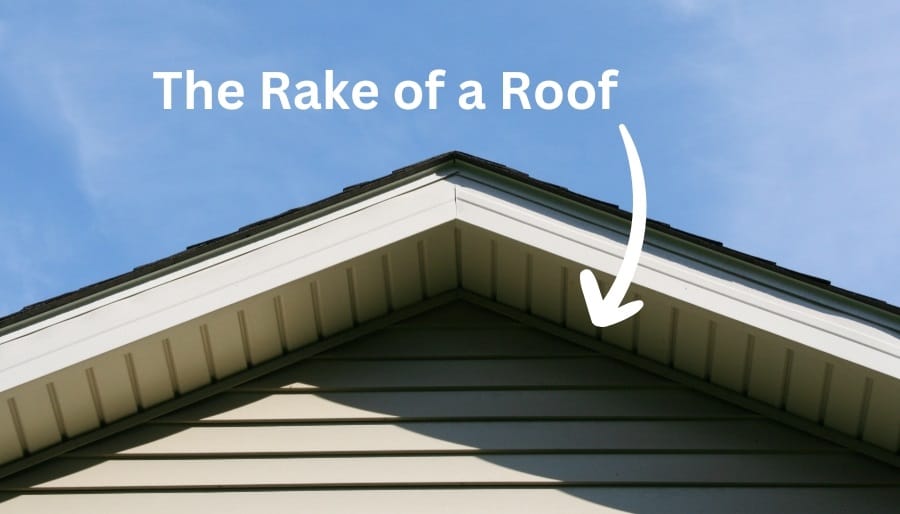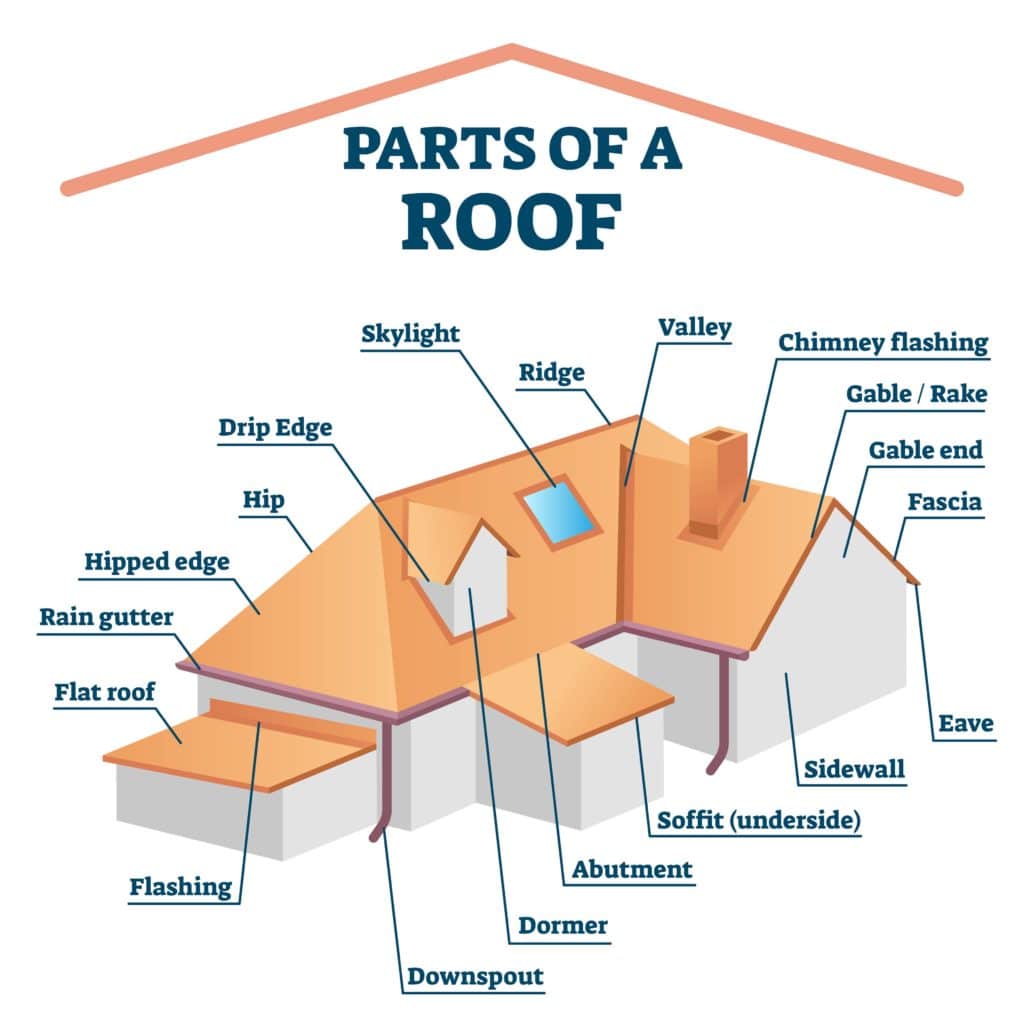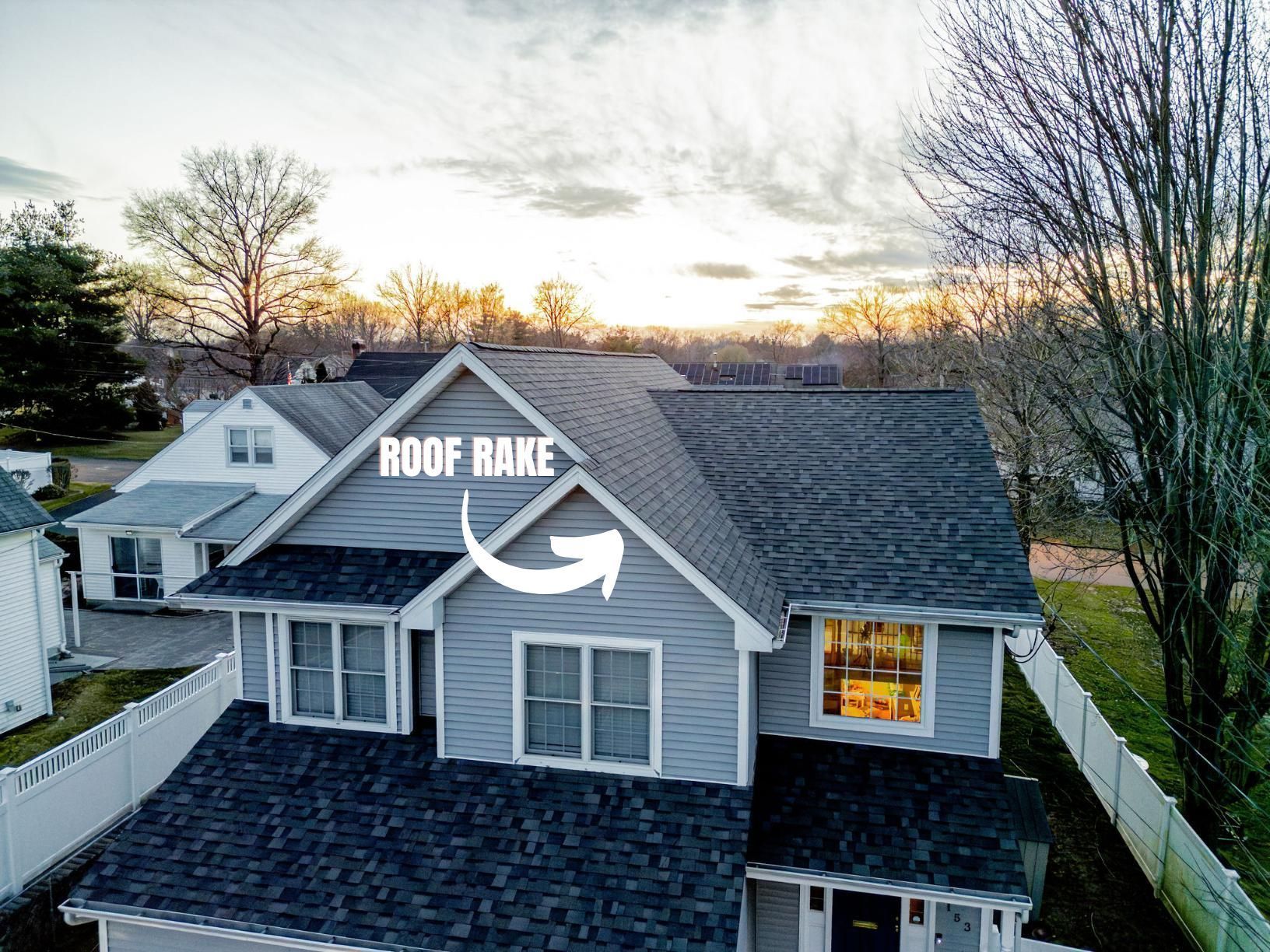Roof Rake Guide: Purpose, Types & Maintenance [2024]
Is a roof simply a covering, or is it a complex system designed to protect your home? The answer, unsurprisingly, leans heavily toward the latter, and a crucial element in this complex system is the roof rake a detail often overlooked but undeniably vital for the health and longevity of your home.
The roof rake, the angled edge running from the eaves to the ridge on a gable or pitched roof, is more than just an aesthetic feature. Its an integral part of the roofs structure, playing a critical role in protecting your home from the elements and ensuring its structural integrity. But what exactly is a roof rake, and why is it so important? Let's delve deeper into this essential, yet often misunderstood, component of your home.
| Attribute | Details |
|---|---|
| Definition | The sloped or angled edge of a gable roof, extending from the eaves (the lower edge) to the ridge (the peak). It's the part of the roof that slopes upwards on either side of the gabled ends. |
| Primary Function | Protecting the roof's edge from wind and water damage, ensuring proper water drainage, and contributing to the overall structural integrity of the roof. |
| Appearance | Creates the triangular shape on the ends of a gable roof. Adds to the architectural appeal and curb appeal of the home. |
| Key Components | Rake boards (also known as verge boards or barge boards), which are trim boards installed along the slanted edge. Gable trim, which is typically installed along the eave and rake edges. |
| Types | Overhanging rakes (extend past the wall), flush rakes (aligned with the wall), and boxed rakes (create a more finished look). |
| Common Problems | Water damage, pest infestation, rot, and damage caused by wind or debris. Improper installation is also a frequent issue. |
| Maintenance | Regular inspection for damage, proper sealing, cleaning, and prompt repair of any issues. |
| Materials Used | Rake boards can be made from various materials, including wood (pine, cedar), PVC, composite materials (Smartboard), and concrete board. |
| Difference from Eave | The eave is the horizontal, overhanging edge of the roof. The rake is the diagonal, sloping edge. |
| Importance in Construction | Essential for both function and aesthetics, ensuring the roof's longevity and protecting the building from the elements. Proper construction is crucial. |
| Relationship to Roof Rakes (Tools) | The roof rake tool is used to remove snow from the roof, while the roof rake (the structure) is the focus of this article. |
| Architectural Styles | The design of the roof rake can vary based on the architectural style of the home. |
Reference: Example Roofing Website (Replace with a real and relevant website URL)
- Beag Beagle Insights Ngos Environmental Efforts Dog Info
- Movie Search Frustration Hd Hub Alternatives Free Streams
The rake of a roof, in simple terms, is the edge of the roof that extends from the eaves (the lower edge of the roof) to the ridge (the highest point of the roof). It's the exposed, angled portion of the roof on the sides of a gable roof the part that creates the familiar triangular shape on the ends of many homes. This is distinct from the eave, which is the horizontal overhang that extends beyond the walls.
A crucial distinction is that the rake is not merely a decorative element. While it certainly contributes to the aesthetic appeal of a home, its primary function is to protect the roof's edges. Instead of stopping at the edge of a roof at the exterior wall where potential leaks can occur, the rake roof often extends past the wall, providing additional protection from wind-driven rain and other elements. Without proper attention to the rake, a roof becomes significantly more vulnerable to damage.
The benefits of a properly constructed and maintained roof rake are numerous. It enhances both the architectural appeal and the structural integrity of the roof, protecting against the elements. By effectively channeling water away from the roofs edge, the rake helps to prevent water damage, a common cause of roof leaks, mold growth, and even structural decay. This is especially important in regions that experience heavy rainfall, snow, or strong winds. The rake also contributes to the aesthetic uniformity of the roof slope, giving the home a more finished and polished appearance. The rake is often installed with a trim board that runs along the slanted edge of a gable roof, offering a neat and finished edge while adding to the roof's curb appeal. The roof rake specifically deals with the angled edges of the gable, and its design can vary depending on the architectural style of the home.
- Joanne Schieble Simpson The Untold Story Steve Jobs Life Impact
- Jackermans Mothers Warmth Ch 3 Love Resilience
Roof rakes come in two main types. First, there are overhanging rakes, which extend beyond the exterior wall, providing extra protection. This design is often chosen to create a more generous, sheltering roof. Second, flush rakes are aligned with the wall, creating a more streamlined appearance, which is sometimes called "clipped rakes". The choice of rake detail depends on the design goals of the roof and the overall architectural style of the home.
The materials used for the construction of a roof rake are also a key consideration. Rake boards, often referred to as verge boards or barge boards, are commonly made from various materials. Wood, such as pine or cedar, offers a traditional look, but requires regular maintenance and can be susceptible to rot and insect damage. PVC (polyvinyl chloride) is a popular alternative due to its durability, resistance to moisture, and low-maintenance requirements. Composite materials, such as Smartboard, provide another option, offering the look of wood with improved longevity. Concrete board can be utilized in some situations.
However, even the most well-designed roof rake is susceptible to problems if not properly maintained. Common issues include water damage, pest infestation, and damage from wind or falling debris. Water damage, in particular, is a significant concern. If the rake is not properly sealed, water can seep in, leading to rot, mold growth, and damage to the underlying roofing structure. Pests, such as insects and rodents, can also find their way into the rake, causing damage and compromising the roof's integrity. Improper installation, or damage from severe weather, can create areas where water and debris can enter, leading to the issues described above. Regular maintenance is essential to prevent costly repairs and prolong the lifespan of the roof.
Regular maintenance is key to keeping your roof rake in top condition. This includes periodic inspections, cleaning, and promptly addressing any signs of damage. Inspect the rake boards for any signs of rot, warping, or damage to the paint or finish. Check the seals and flashing for any gaps or cracks. Keep the rake free of debris, such as leaves, twigs, and snow, as these can trap moisture and accelerate deterioration. If you notice any issues, such as missing shingles, damaged flashing, or signs of water intrusion, its important to address them immediately. Routine maintenance will help to extend your roofs lifespan and prevent costly repairs down the line. Remember that roof maintenance goes beyond the main shingles and flashing. The rake is a pivot point for issues like mold, rot, and granule loss if neglected.
The angle of the rake, in most cases, will be steeper than the rest of your roof and is often found at the gabled ends. The roof rake or rake of the roof is an open area of the roof that extends from the roof edge to its ridge. It is an overhang that occurs at the side of the gable roof.
When you consider the overall importance of roof maintenance, the rake emerges as a critical element in extending the lifespan of your roofing system. Furthermore, the rake is essential in any roofing system as it facilitates proper drainage, prevents leaks, and provides aesthetic uniformity to the roof slope. Think of the rake as the roofs stylish cap, providing both protection and visual appeal. Gable trim is typically installed along the eave and rake edges of the roof, while rake trim is used on the sloping edges of a gable end along the wall and under the overhang. The rake you choose should be based on the design goals for the roof. For instance, if you desire a generous, sheltering roof, an overhanging rake detail is appropriate. Keep in mind that the rake detail is a key consideration.
In construction, the rake of a roof, or what some other people call the roof rake, is essential for both function and aesthetics. The role of the rake in roof maintenance is significant. The rake on a roof is a crucial component that holds immense importance in the overall functionality and longevity of the structure. Those sloped overhangs on the gable ends of roofs are called roof rakes, and they play a crucial role in protecting your home from the elements while adding a touch of architectural flair. The roof rake may be a small and often overlooked component of your home, but its importance cannot be overstated. The roof rake specifically deals with the angled edges of the gable, and its design can vary depending on the architectural style of the home.
And it's not just about the structural integrity of the roof. The design of the rake also contributes significantly to the overall aesthetic of a home. The way the rake lines up with the gables, the choice of trim, and the materials used all contribute to the homes curb appeal. Consider it as the cherry on top, the finishing touch that elevates the look of a home. For instance, if you desire a generous, sheltering roof, an overhanging rake detail is appropriate. If you prefer a roof in which the planes of the roof and the walls fold together to form a taut geometry, a clipped rake is the best choice.
While the roof rake is designed to cover the upper edge of the roof, don't confuse it with a roof pitch, which refers to the angle of the entire roof. You also shouldnt confuse the rake of a roof with a roof rake, which is a specialized tool used to remove snow from your roof after a heavy snowfall. Wet snow can weigh as much as 21 pounds per square foot, according to the federal emergency management agency (fema), and a snow roof rake is the most effective means of removing that weight.
The rake keeps the roofs edge tidy. A trim along the inclined edge of a gable roof that covers the top ends of the siding for aesthetic and protective purposes. The rake is essential in any roofing system as it facilitates proper drainage, prevents leaks, and provides aesthetic uniformity to the roof slope. The rake of a roof shields the top edge of the roof. Therefore, the rake is one of the most common sites of the roof where leaks can occur. It is designed to cover the upper edge of the roof and runs from the edge of the roof to the ridge.



Detail Author:
- Name : Don Turcotte
- Username : laurine.johns
- Email : xkerluke@mertz.com
- Birthdate : 2004-11-06
- Address : 335 Korbin Plaza Apt. 106 West Savionmouth, LA 71484-3406
- Phone : +1-740-420-5116
- Company : Kerluke, Frami and Bergstrom
- Job : Health Educator
- Bio : Sed placeat esse totam inventore. Eum omnis quia voluptates rerum distinctio repudiandae aut. Sed quam nisi ullam tenetur dolorum est rerum.
Socials
twitter:
- url : https://twitter.com/douglas_haag
- username : douglas_haag
- bio : Dolores deserunt qui est quasi quis nihil. Illo et rem labore magnam alias modi. Repudiandae quaerat officiis in quos facere.
- followers : 4599
- following : 1899
instagram:
- url : https://instagram.com/haagd
- username : haagd
- bio : Sit eveniet quia optio nam molestias sunt quam. Aliquid ipsam dolores ducimus porro ut facere.
- followers : 2318
- following : 1661
facebook:
- url : https://facebook.com/haagd
- username : haagd
- bio : Beatae necessitatibus quae quaerat nihil.
- followers : 5317
- following : 2984
linkedin:
- url : https://linkedin.com/in/haagd
- username : haagd
- bio : Nihil dolorem consectetur porro omnis dolorem.
- followers : 6079
- following : 2334